Selecting the right kayak paddle might seem like a daunting task, but it’s an essential part of enjoying the kayaking experience. Picking the perfect paddle can significantly improve your efficiency and comfort out on the water. I’ve spent my fair share of time researching and testing out different kayak paddles, and now I’m here to help you make the right decision. In this article, I’ll cover how to choose a kayak paddle that best suits your needs and preferences.
The first step in choosing a kayak paddle is understanding the various factors that come into play. Consider your kayaking environment, paddling style, and personal preferences, such as paddle length, blade shape, and material. It’s crucial to find a balance between these factors, as they all contribute to your paddling experience.
Lastly, when you’re researching which paddle to choose, it’s essential to keep your budget in mind. While there are high-end options available, sometimes a more affordable paddle can still provide you with the features and durability you’re looking for. With a little research and patience, you’re sure to find the perfect kayak paddle that checks all your boxes. In the following sections of this article, I’ll break down each of these factors, making it even easier for you to make an informed decision.
Contents
Contents
Understanding Kayak Paddle Types
When it comes to how to choose a kayak paddle, it’s essential to understand the different paddle types available. In this section, I’ll introduce you to the main types of kayak paddles and discuss their unique features. This will help you better determine which style is most suitable for your needs.
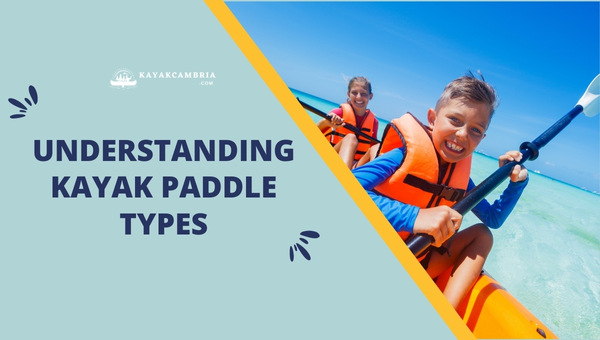
1. Recreational Paddles
First, let’s discuss recreational paddles.
- Ideal for calm waters and leisurely kayaking
- Usually feature a moderate blade size and shape
- Prioritize comfort and ease of use over performance
- Can be made from a variety of materials like aluminum, plastic, and fiberglass
Recreational paddles are perfect for beginner to intermediate kayakers who are looking for a versatile, all-around paddle.
2. Performance Paddles
Next, let’s consider the performance paddles, also known as touring paddles.
- Designed for long-distance kayaking and faster paddling
- Offer larger blade sizes and optimized shapes
- Lightweight construction using materials like carbon fiber
- Suitable for intermediate to expert kayakers
The performance paddles enhance efficiency and reduce fatigue during extended paddling sessions, making them ideal for those who take kayaking more seriously.
3. Whitewater Paddles
Another category worth exploring is whitewater paddles.
- Built for navigating rapids, rocky waters, and other challenging conditions
- Durable materials like reinforced plastic, fiberglass, or carbon fiber
- Blade shapes specifically designed for power and maneuverability
- Typically feature shorter shafts for tighter control
Whitewater paddles are best for experienced kayakers who enjoy tackling fast-moving water and need a paddle that can withstand impacts.
4. Fishing Paddles
Finally, we have the fishing paddles.
- Engineered with anglers in mind
- Offer extra features like built-in retrieval hooks, ruler measurements, and blade shapes for stealth
- Can be made from various materials, but sturdiness and durability are key factors
- Suitable for beginners to experts, depending on specific needs
If you’re an angler and want to optimize your kayak for fishing, a dedicated fishing paddle is a great choice.
Determining the Correct Length
One of the most important factors in how to choose a kayak paddle is determining the correct length. A paddle that’s too short or too long can make paddling inefficient and tiring. I’ll guide you through the process of choosing the right length for your kayak paddle.
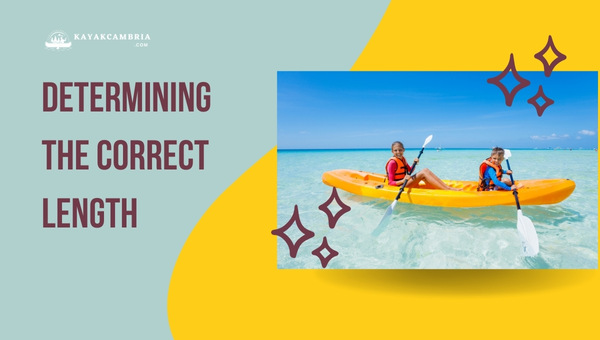
First, consider your kayak’s width and your height. Paddle length varies depending on both factors. Generally, a wider kayak or a taller paddler will require a longer paddle.
To give you a rough idea, here’s a basic table to gauge the appropriate paddle length:
| Kayaker’s Height | Kayak Width under 23″ | Kayak Width 24″ to 28″ | Kayak Width 29″ to 32″ | Kayak Width 33″ and over |
| under 5’5″ | 210-220cm | 220-230cm | 230-240cm | 250cm |
| 5’5″ to 5’11” | 220-230cm | 230-240cm | 240-250cm | 260cm |
| over 6′ | 230-240cm | 240-250cm | 250-260cm | 260-270cm |
Keep in mind these numbers are approximate and personal preference plays a role in finding the perfect paddle length for you.
Another aspect to take into account is your paddling style. There are two main types:
- High-angle paddling: This aggressive style is used for faster-paced activities like whitewater kayaking or racing. It requires a shorter paddle with wider blades to grab more water with each stroke.
- Low-angle paddling: For leisurely trips or long-distance touring, this relaxed style saves energy by keeping the paddle blade closer to the water. It requires a longer paddle with narrower blades for a more efficient stroke.
When trying out different paddle lengths, pay attention to these points:
- Paddle effortlessly: Your paddle should allow you to stroke easily without straining your arms or upper body.
- Maintain proper form: The top hand should be at your eye level, while your bottom hand should be at around your waist level. Both hands should stay within your field of vision.
- Blade submersion: The entire blade should be submerged underwater during the stroke, without forcing you to lean or adjust your body position.
By considering your kayak’s width, height, paddling style, and personal preferences, you’ll be well on your way to finding the perfect paddle length for an enjoyable and efficient kayaking experience.
Considering Paddle Materials
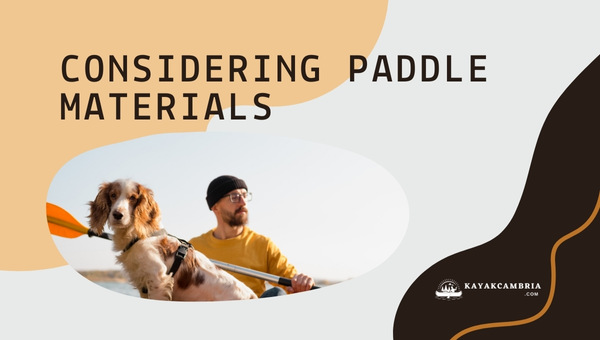
When it comes to how to choose a kayak paddle, one important aspect I pay close attention to is the construction material, as it plays a vital role in a paddle’s weight, durability, and overall performance. Let’s break down the key materials, so you can select the ideal paddle for your needs.
1. Aluminum

Paddles with aluminum shafts are prevalent among entry-level kayakers due to their affordability and durability. They’re lightweight and offer reasonable performance. However, aluminum can feel cold to touch in colder climates, so you might want to consider other options if paddling in frigid conditions. A few key points about aluminum paddles:
- Budget-friendly
- Durable and lightweight
- Generally cold in colder climates
2. Fiberglass
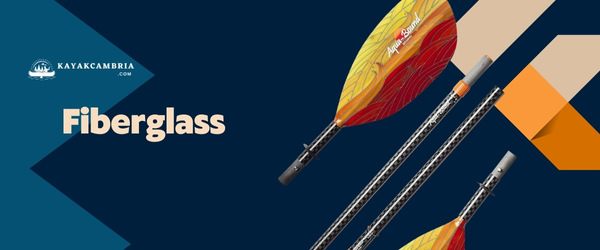
Fiberglass paddles are a popular choice among intermediate kayakers because they’re lighter than aluminum and less expensive than carbon fiber paddles. In terms of performance, fiberglass is efficient, with good overall durability. Here are some quick facts about fiberglass paddles:
- Great balance between price and performance
- Lightweight and durable
- Available in various colors and designs
3. Carbon Fiber

For advanced kayakers and those who desire top-notch performance, carbon fiber is the way to go. These paddles are ultralight and provide excellent stiffness, translating to increased paddling efficiency. The only downside is the higher price tag. Key points about carbon fiber paddles include:
- High-end performance
- Ultra-lightweight
- Expensive compared to other materials
In addition to shaft materials, it’s essential to consider the materials used in the blades too. While plastic or nylon blades are budget-friendly, they lack the stiffness and efficiency of fiberglass or carbon fiber blades.
Comparing Blade Shapes and Sizes
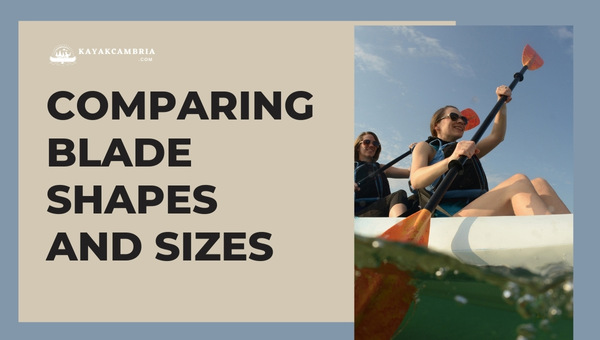
When learning how to choose a kayak paddle, one of the key aspects to consider is the blade shape and size. Different blade shapes and sizes have a significant impact on your paddling experience, affecting factors such as power output, stroke efficiency, and fatigue levels. In this section, I’ll be discussing the main blade shapes and sizes to help you decide which one best suits your needs and paddling style.
High-angle vs. low-angle blades
Kayak paddle blades can be classified into two categories:
- High-angle blades: These blades have a larger surface area and a more aggressive angle, designed for powerful and fast strokes. They’re perfect for experienced kayakers who prefer a faster pace, need to cover long distances in a shorter amount of time, and have the strength to handle the increased resistance. High-angle blades are most commonly used in whitewater and sea kayaking.
- Low-angle blades: With a smaller surface area and less aggressive angle, low-angle blades offer a more relaxed and less fatiguing paddling experience. They’re ideal for recreational and touring kayakers who prefer a more leisurely pace and want to minimize the impact on their joints and muscles. The angled design of these blades helps improve stroke efficiency and reduces wind resistance, making them a popular choice for long-distance paddling and exploration.
Narrow vs. wide blades
Another aspect to consider when choosing a kayak paddle is the width of the blade:
- Narrow blades: These blades offer less resistance in the water and require less effort per stroke, making them suitable for long journeys and continuous paddling without fatigue. They’re perfect for touring and all-day paddling, as well as for beginners who are still developing their technique and stamina.
- Wide blades: Providing more power per stroke, wide blades are well-suited for experienced kayakers who need to maneuver quickly and efficiently in challenging environments like rapids or strong currents. Though requiring more effort per stroke, they offer excellent control and responsiveness in demanding paddling situations.
Choosing The Right Shaft Type
When it comes to how to choose a kayak paddle, selecting the proper shaft type plays a major role in overall comfort and performance. In this section, I’ll discuss various shaft types and their benefits to help you make an informed decision.

There are two main categories of shaft types: straight shaft and bent shaft.
1. Straight Shaft
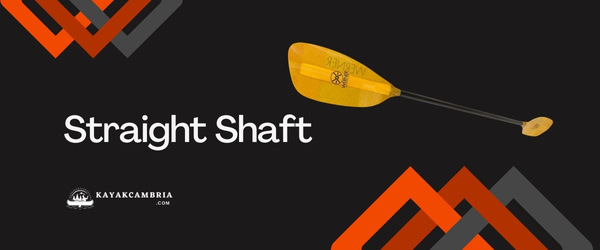
The straight shaft is the most common and traditional type of paddle shaft, with a uniform diameter from one end to the other. Many paddlers prefer the simplicity and lower cost associated with these paddles. Advantages of straight shaft paddles include:
- More affordable
- Lighter weight
- Easier to slide hands along the shaft
2. Bent Shaft

The bent shaft paddle incorporates a slight bend or angle in the shaft, designed to reduce stress on the paddler’s wrists while maintaining a more natural hand position. This ergonomic design has its own set of benefits, such as:
- Reduced wrist fatigue
- Increased comfort
- Enhanced control
In addition to the main categories, there are other factors to consider when choosing the right shaft type for your kayak paddle. These factors include:
- Material: The materials used for paddle shafts can vary, but common choices include aluminum, fiberglass, and carbon fiber. Aluminum is durable and affordable, fiberglass offers a balance of performance and cost, while carbon fiber is the lightest and stiffest option, but also the most expensive.
- Diameter: Shaft diameter affects grip and comfort. Standard shaft diameters are typically 1 1/4 inches, while small-diameter shafts can be around 1 1/8 inches. Paddlers with smaller hands or those who prefer a snug grip may opt for a small-diameter shaft.
- Length: Paddle length should be based on your height, the width of your kayak, and your paddling style. As a general rule, taller paddlers or those with wider kayaks need longer paddles, while shorter paddlers or those with narrower kayaks require shorter paddles.
Ultimately, the right kayak paddle shaft type is a personal preference influenced by factors like comfort, cost, and function. Don’t forget to try out different paddle shafts and find which one works best for you in the long run.
Assessing Your Paddling Style
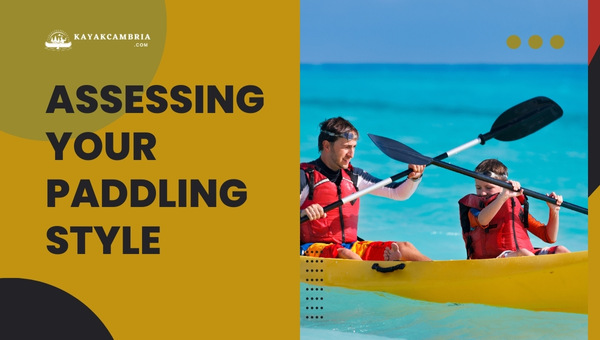
Figuring out how to choose a kayak paddle starts with understanding your paddling style. A crucial step in this process is assessing your personal paddling style. Kayaking has two primary paddling styles: low-angle and high-angle. Let’s dive into the differences between these styles and how they impact your paddle choice.
Low-Angle Paddling
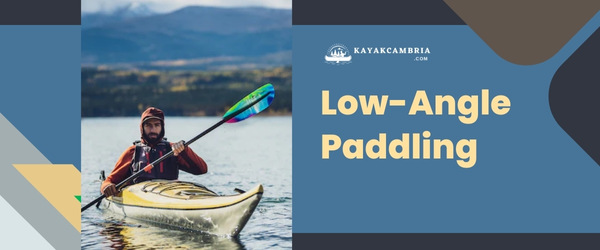
Low-angle paddling is characterized by a more horizontal movement of the paddle, which is great for casual kayakers or those who enjoy long-distance kayaking. This style is less aggressive and focuses on efficiency and endurance. When choosing a kayak paddle for low-angle paddling, consider the following factors:
- Paddle Length: Generally, low-angle paddlers need a longer paddle to ensure smooth, efficient strokes. The required paddle length depends on your height and the width of your kayak.
- Blade Shape: A longer, narrower blade creates less resistance in the water, making it easier to maintain a relaxed paddling rhythm for extended periods.
High-Angle Paddling
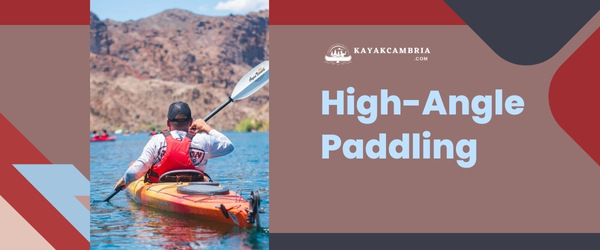
High-angle paddling involves a more vertical movement of the paddle, which is typically used by experienced kayakers or those who prefer faster, more dynamic paddling. This style provides more powerful strokes and quicker maneuverability. Here are some factors to consider when selecting a paddle for high-angle paddling:
- Paddle Length: Shorter paddles prove ideal for high-angle paddlers, as they allow for quicker, more forceful strokes.
- Blade Shape: A wider, shorter blade delivers more power in each stroke, making it well-suited for high-angle paddling.
To help you choose the best paddle for your paddling style, use the following guidelines:
| Kayak Width | Paddler Height | Low-Angle Paddle Length | High-Angle Paddle Length |
| 23″ or less | 5’5″ or shorter | 210-220 cm | 205-215 cm |
| 24″-28″ | 5’5″-5’11” | 220-230 cm | 210-220 cm |
| 29″ or more | 6′ and taller | 230-240 cm | 215-230 cm |
After identifying your paddling style and considering the factors mentioned above, it’s essential to test different paddle sizes, lengths, and materials. Visiting a local paddle shop can enable you to get an actual feel for the paddles and receive professional advice. Ultimately, understanding your paddling style and trying out various options will help you find the perfect kayak paddle tailored to your needs.
Factoring in Water Conditions
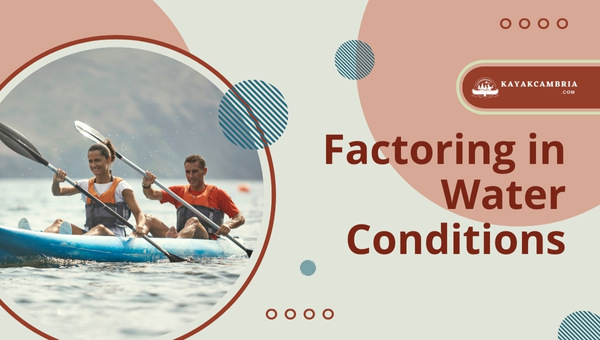
When considering how to choose a kayak paddle, it’s crucial to factor in the water conditions where you’ll be paddling. Different types of water call for various features in a kayak paddle. In this section, I’ll discuss several factors related to water conditions that should influence your paddle choice.
One important consideration is the type of water you’ll be navigating:
- Flatwater: Calmer bodies of water, like lakes and slow-moving rivers, typically require a longer shaft and a lower-angle paddle. Low-angle paddle blades are more streamlined and make for a less fatiguing paddle stroke.
- Whitewater: For more turbulent waters, such as rapids and fast rivers, a shorter shaft and a high-angle paddle are optimal. High-angle paddle blades are designed for extra power and should be made of sturdy materials to withstand the force of turbulent waters.
Next, consider the water temperature:
- Cold water: When paddling in cold water, you might want to consider a paddle with a smaller diameter shaft. This will be more comfortable to grip, especially when wearing gloves or for those with smaller hands.
- Warm water: For warm water paddling, a standard diameter shaft is typically suitable.
Weather conditions also play a part in selecting the right kayak paddle:
- Wind: In windy conditions, it’s essential to pick a paddle with a low wind resistance blade, such as a low-angle paddle.
- Current: For strong currents, choose a paddle with a high-angle blade, as it provides more power and control.
Lastly, think about the paddle’s material:
- Fiberglass or carbon fiber: These materials are lightweight, strong, and efficient, making them suitable for various water conditions. Carbon fiber is the lightest option but tends to be more expensive.
- Aluminum or plastic: These paddles are more affordable and durable, which can be an advantage in rocky or shallow waters but may not perform as well as fiberglass or carbon fiber options.
By taking the time to understand how water conditions impact your choice of a kayak paddle, you’ll find the most suitable paddle to enhance your kayaking experience.
Weighing the Importance of Weight
When figuring out how to choose a kayak paddle, it’s crucial to consider the weight of the paddle. As a kayaker, I can attest that a lighter paddle can make a significant difference, especially over long paddling sessions. In this section, I’ll explore the importance of weight in kayak paddles and provide some pointers to help you make informed decisions.

Paddle weight has a direct impact on your paddling experience. Lighter paddles allow for:
- Reduced fatigue
- Improved efficiency
- Increased control
On the other hand, heavier paddles tend to be:
- More durable
- Less expensive
- Suited for beginners
Materials play a large role in determining a paddle’s weight. Here’s a quick breakdown of common materials and their characteristics:
| Material | Weight | Price | Durability | Performance |
| Aluminum | Heavy | Low | High | Basic |
| Fiberglass | Medium | Moderate | Moderate | Good |
| Carbon Fiber | Light | High | Moderate | Excellent |
To decide on the ideal weight, consider factors like your paddling style and personal preferences. For example:
- Touring or long distances: If you plan on taking extended trips, it’s important to invest in a lightweight paddle. The reduced fatigue will improve your overall experience.
- Occasional use or recreational paddling: A medium-weight paddle should suffice. Fiberglass paddles strike a balance between performance and durability.
- Whitewater or rough conditions: Durability is key here. Aluminum paddles might be heavier, but they can withstand the harsh environment.
Lastly, don’t forget to factor in your own physical ability. Maintaining proper technique and efficient energy use is essential to a positive kayaking experience. If you’re new to kayaking or have limited upper body strength, a lighter paddle may be more suitable.
Setting A Budget For Your Paddle
When I’m deciding how to choose a kayak paddle, one of the essential factors to consider is setting a budget. Paddle prices can range greatly, so it’s crucial to set a budget that aligns with my needs and preferences. In this section, I’ll guide you through some factors to keep in mind when determining the right budget for your kayak paddle.
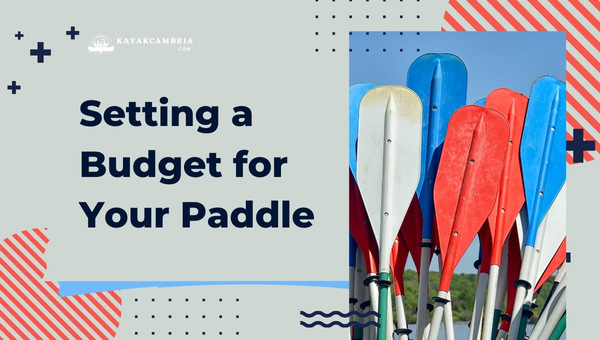
First, let’s have a look at some of the common price categories for kayak paddles:
| Price Range | Quality |
| Below $100 | Entry-level |
| $100 – $200 | Mid-range |
| $200+ | High-end |
- Entry-level paddles (Below $100) are suitable for beginners or recreational kayakers. They’re often made of heavy materials like aluminum or plastic, which can make them less efficient and tiring in the long run. However, they’re also more affordable and can be a good starting point for those new to the sport.
- Mid-range paddles ($100 – $200) offer more refined designs and lighter, more durable materials. These paddles are best for those who have some experience kayaking or plan to spend a significant amount of time on the water. They often come with features like adjustable shaft lengths or feather angles, providing increased customization and comfort.
- High-end paddles ($200+) are made from premium materials like carbon fiber, which makes them extremely lightweight and efficient. These paddles are designed with performance in mind, and cater to experienced kayakers or those who demand peak efficiency from their gear.
When establishing a budget, it’s important to keep in mind the level of the kayaker you are, how often you’ll use the paddle, and the type of kayaking you plan to do. If you’re a casual kayaker or just starting, an entry-level paddle might be sufficient. But for those who kayak more frequently or seek a more efficient and comfortable experience, investing in a mid-range or high-end paddle is the way to go.
Also, consider any additional gear you’ll need for your kayaking adventures. Your budget should include other essentials like a personal flotation device, kayak rack, or dry bag.
Ultimately, the key to finding the right kayak paddle within your budget is to strike a balance between performance, quality, and value. Keep these considerations in mind as you explore the variety of paddles available in the market, and you’ll be well on your way to finding the perfect paddle that suits both your kayaking needs and your wallet.
Conclusion: Making a Confident Choice
Having explored the factors involved in selecting the perfect kayak paddle, I’m confident that you now have the knowledge needed to make an informed decision. Keep these key points in mind when determining how to choose a kayak paddle that best suits your needs:
- Paddle length: The paddle’s length should correspond with your height and your kayak’s width. Taller paddlers or those with wider kayaks generally require longer paddles.
- Materials: Choose between aluminum, fiberglass, carbon fiber, or wood, depending on your budget and preferences. Each material has its pros and cons, but remember that lightweight, strong materials like carbon fiber often come with a higher price tag.
- Blade shape: Consider the variations in blade shape, such as dihedral, asymmetric, or spoon-shaped, as well as the blade’s size. Blade shape influences your paddling style and performance, so find a design that suits your needs and experience level.
- Shaft design: Straight or bent shafts both have their merits. Evaluate your paddling style and physical condition to decide which design will provide optimal efficiency and comfort.
- Feathering angle: Adjustable ferrules allow you to customize the feathering angle, reducing wind resistance and aiding in smoother strokes. Experiment with different angles to find the one that feels most comfortable for you.
By carefully weighing these factors, I’m sure you’ll be able to know how to choose a kayak paddle that’ll enhance your time on the water. Trust your instincts, prioritize your preferences, and you’ll soon find yourself paddling like a pro.

